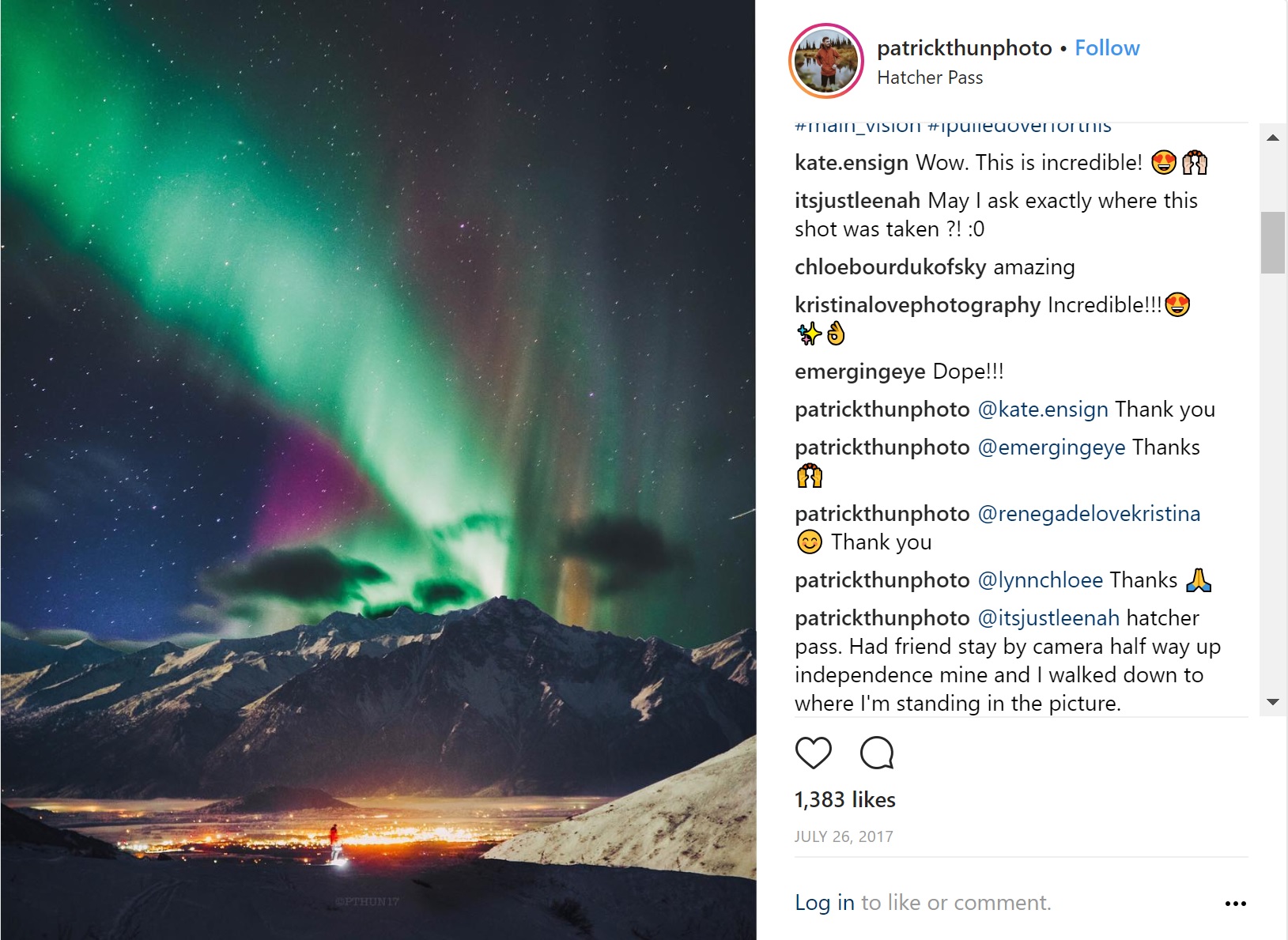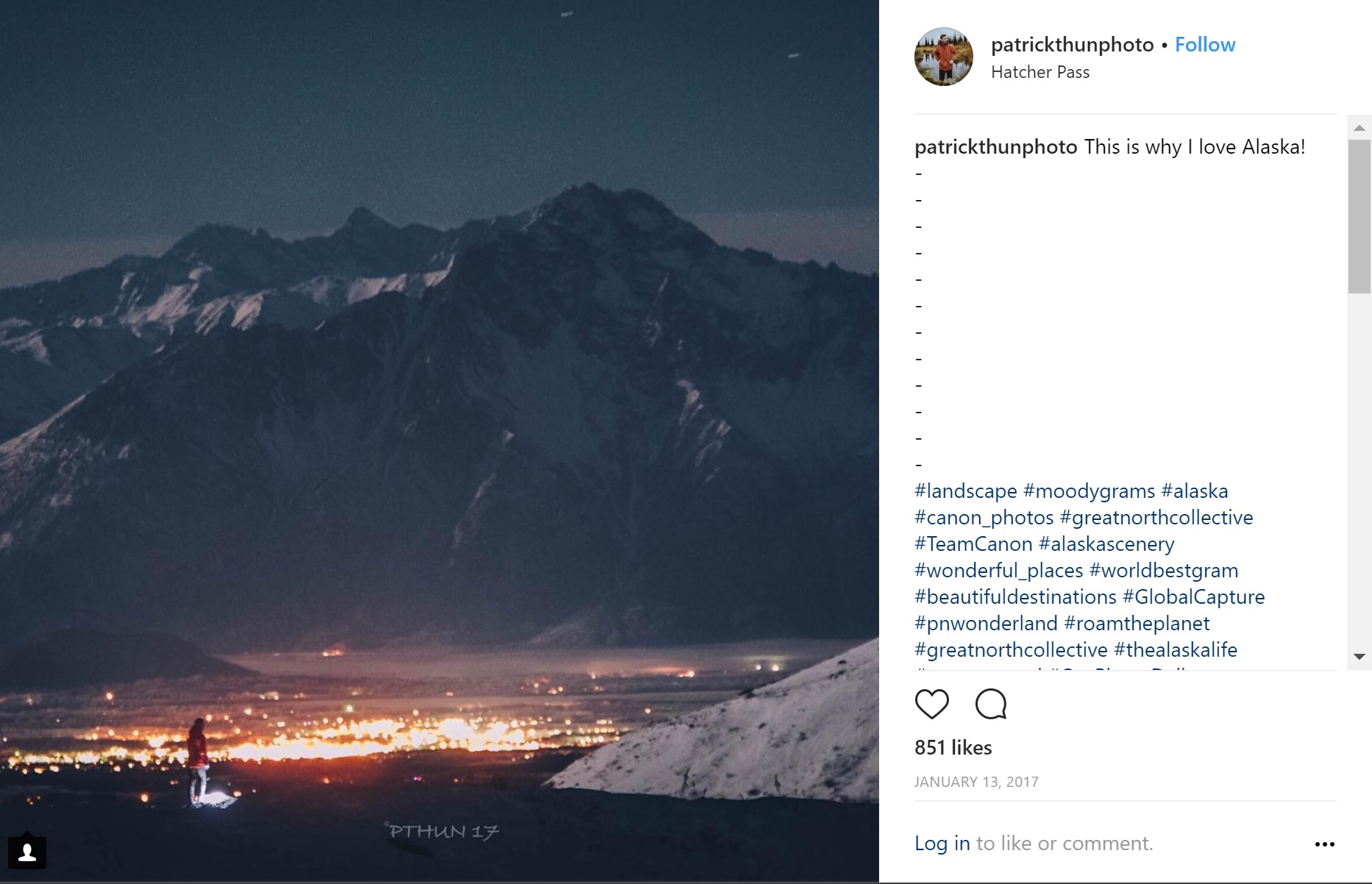As a photographer, nothing irks me more than when another photographer tries to pass off a fake composite image as real. I'm not talking about HDR photography or image stacking, but rather when a photographer blends two or more different compositions together to create an image of a scene that never existed and conveniently forgets to mention that when they post the image publicly.
Here's an example of a fake aurora photo by an amateur Alaska photographer popular on Instagram, way more popular than the distinguished professional Alaska photographers I follow:
Wow, what a wondrous image of the aurora over the city of Palmer, Alaska! In fact, it's one of the best aurora images I've ever seen! But wait, why did the photographer wait until July 26 to post this shot, about three months after aurora photography is no longer possible at this latitude in Alaska? If you took a jaw-dropping image like this, wouldn't you post it immediately? Seems a bit strange...
In the comments someone asks where the photo was taken and the photographer responds, "Hatcher Pass. Had friend stay by camera half way up Independence Mine and I walked down to where I'm standing in the picture." Hmm, so you left it up to your friend to take this amazing shot and somehow the composition and exposure turned out perfectly, even though the aurora could have shifted and changed brightness during the time you were walking? Must have been lucky, I guess.
Hold on a second, though...If you're in Hatcher Pass looking toward Palmer, wouldn't you be facing due south? This must have been one crazy show if the northern lights rose in the south in a formation that looks like a typical aurora band over the northern horizon. And you must have been using a fairly long focal length for the mountains in the distance to look so big, which means this must have been a really short exposure to prevent star trails. But if this were a really short exposure, then why are there so many bright stars? And those clouds in the distance must have been moving really fast to appear so blurry.
Something else doesn't look right. Moonlight is illuminating the eastern faces of the mountains, but it isn't illuminating the clouds? And if the moon is bright enough to light up the landscape in this image, why is the sky so dark? Moonlight is scattered by the sky just like sunlight and will make the sky look blue in a long exposure.
Let's see, I could definitively prove this image is fake by identifying the stars in the sky and demonstrating they could never appear in that direction...or I can just scroll through your Instagram feed to find these:
These two photos look awfully familiar. Notice in the first (which serves as the foreground in the fake photo, albeit with additional processing) that the sky is a shade of blue and there are only a few visible stars, which are leaving trails across the sky. In the second, notice the mountains in the foreground look much smaller and darker than in the fake photo, and the clouds appear much closer.
Unfortunately, Instagram and other social media platforms are full of amateur photographers who are only interested in building a large following and some of them are willing to dupe their thousands of followers for the sake of gaining more. If it looks too good to be true, it probably is!
For tips on creating REAL aurora images, read my free Aurora Photography Guide.
Interested in Aurora Borealis Photography Tours? Contact me for more information!


